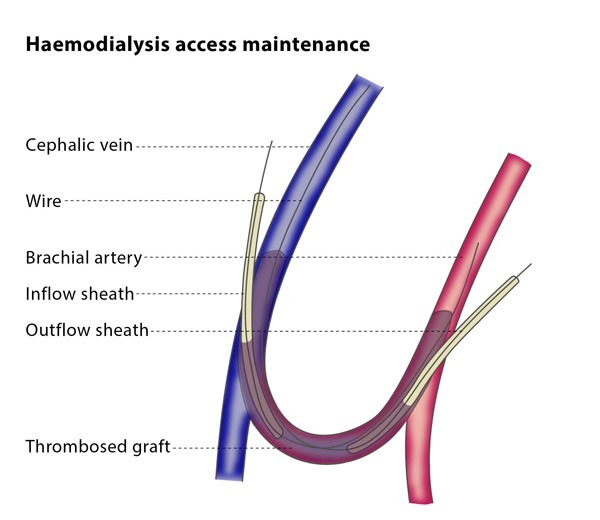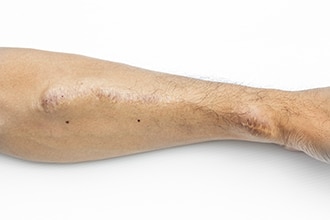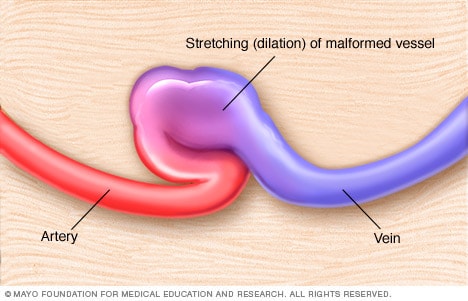Av Fistula For Dialysis
That is an artery is directly sutured to a vein. An AV fistula is a connection between an artery and a vein creating a ready source with a rapid flow of blood.

Haemodialysis Access Maintenance Cirse
Access For Haemodialysis Beaumont Hospital

Hemodialysis Niddk
Admit for IR Fistulogram and possible inpatient temporary dialysis.

Av fistula for dialysis. It generally lasts longer and has fewer risks and complications than other access methods. AV fistula and AV graft Your arm may be cool and numb where the fistula or graft was put in. Of these an AV fistula is preferred for long-term hemodialysis vascular access provided it is consistent with the patients end-stage kidney disease ESKD Life-Plan and overall goals of care and patient circumstances are favorable for its creation.
Comparing AV Fistula vs. AV Fistula Graft Cannulation and Decannulation Audit Tool pdf. More AV Fistula Problems.
What is an AV fistula. Is less likely to become infected or clot. An AV fistula is often considered the gold standard of dialysis accesses.
The preferred dialysis access is the arteriovenous AV fistula. Less likely to become infected. An AV fistula is a surgical connection made between an artery and a vein created by a vascular specialist.
Description Here are the steps for creating an AV fistula or AV graft the most common procedures usually. Engaging patients the End Stage Renal Disease ESRD Networks the renal community providers clinicians and stakeholders to. An arteriovenous fistula or AVF is a vessel that is formed by joining a vein to an artery in your arm during an operation to form an accessible blood vessel that gives increased flows of blood that are adequate for dialysis.
What is an AV fistula. This stands for arteriovenous fistula as it requires joining an artery to a vein. However there are several alternatives worth considering.
Two types of permanent vascular access are available for hemodialysis the arteriovenous AV fistula and the AV graft. A vein access also known as a vascular access is needed to move blood between your body and the dialysis machine during hemodialysis treatments. The best way to establish long-term hemodialysis access is to construct an arteriovenous AV fistula.
Time for the fistula to develop so it is ready to use when you need dialysis. AV fistula thrombosis is quickly identified by examining the fistula site for the absence of a bruit and thrill. This is the preferred type of access for dialysis because this method has a low risk for blood clots or infection.
Hemodialysis also spelled haemodialysis or simply dialysis is a process of purifying the blood of a person whose kidneys are not working normally. AV graft Your arm may swell for about 2 weeks after your surgery. AV Fistula Graft Cannulation and Decannulation Audit Tool pdf icon PDF 384 KB Add Your Organizations Logo.
The longer a fistula has to develop before it is used for dialysis the better it performs and the longer it lasts. The fistula was further evaluated for OutflowInflow Obstruction. An arteriovenous AV fistula or graft should be placed before hemodialysis treatments begin.
The AV fistula is a blood vessel made wider and stronger by a surgeon to handle the needles that allow blood to flow out to and return from a dialysis machine. The AV fistula is considered the best option because it. Your nephrologist kidney doctor may recommend you get an AV Fistula if heshe anticipates that you will need to start hemodialysis soon or if you have recently started hemodialysis.
However due to vascular limitations only about 30 of all dialysis patients have working AV fistulas. When patients find out they are in the advanced stages of chronic kidney disease and will need dialysis their nephrologist will advise them to get a fistula or graft. An AV Fistula is the connection of a vein and an artery in your arm in order to allow the blood from your body to be pulled out into the dialysis machine and put back in at the same place.
Ii Fistulas have significant advantages over other forms of access. Provides highest blood flow for dialysis. An arteriovenous AV fistula is a type of access used for hemodialysis.
An AV fistula is the preferred method of vascular access for long-term dialysis. If you do not have a vein of sufficient size for an AV fistula an artificial vein may be installed via AV. A Cimino fistula also Cimino-Brescia fistula surgically created arteriovenous fistula and less precisely arteriovenous fistula often abbreviated AV fistula or AVF is a type of vascular access for hemodialysisIt is typically a surgically created connection between an artery and a vein in the arm although there have been acquired arteriovenous fistulas which do not in fact demonstrate.
Management options include surgical thrombectomy versus thrombolysis with streptokinase or tissue plasminogen activator with or without angioplasty. Put it on 2 pillows at the same level as your heart. AV fistula surgery can improve the comfort and quality of life for people who need long-term dialysis.
The fistula and graft are permanent accesses placed under the skin. A large untreated arteriovenous fistula can lead to serious complications. It can be used whether dialysis is performed at a dialysis center or you perform home hemodialysis HHD.
To reduce the swelling keep your arm up when you are resting or sitting. An AV fistula is a surgically placed shunt. 178 In the case of thrombosis vascular surgery should be consulted immediately.
The dialysis fistula is often referred to as an AV fistula. An AV fistula is the type of dialysis access that is considered the best choice because it generally lasts longer and has fewer problems. This type of dialysis achieves the extracorporeal removal of waste products such as creatinine and urea and free water from the blood when the kidneys are in a state of kidney failureHemodialysis is one of three renal replacement therapies the.
The fistula is located under the skin and is used during. It is therefore recommended that a fistula be created approximately six months before you need to start dialysis. AV fistula is the best way to receive dialysis because its a long term solution for dialysis patients and carries a low risk of infection.
Arteriovenous fistulas are often surgically created for use in dialysis in people with severe kidney disease. AV Graft AV Fistula Advantages. An arteriovenous AV fistula is an abnormal connection between an artery and a vein.
Increasing AV fistula utilization in all appropriate hemodialysis patients to 68. This lasts a few weeks and is normal. The part of the dialysis circuit that begins with the arterial anastomosis and continues through the entire axillary vein or cephalic vein for a dialysis circuit in the arm whether the termination point of the peripheral segment is the end of the axillary vein or the cephalic vein will depend on the vein involved in the arteriovenous fistula or graft.
Less likely to clot. An artery is a high-pressure vessel that carries blood away from the heart and delivers nutrients and oxygen to the tissues. Decreasing the use of long term catheters 90 days to 10.
If it appears that dialysis will be needed in the future its time to establish dialysis access ideally with one of the three permanent methods described above option 2 3 or 4. This is due to its high patency rate and the strong ability of the puncture sites to heal. This patients fistula did not display overt characteristics of Bleeding Hematoma Infection Aneurysm Vascular Insufficiency or other emergent problem.

A V Fistula Graft 9994998060 Youtube

Arteriovenous Av Fistula For Dialysis

Arteriovenous Fistula Symptoms And Causes Mayo Clinic

Arteriovenous Fistula Images Stock Photos Vectors Shutterstock

Patient Education Hemodialysis Beyond The Basics Uptodate

Complications Of Autogenous Arteriovenous Fistulas Intechopen

Av Fistula For Dialysis Panache Aesthetics

Cimino Fistula Wikipedia
Comments
Post a Comment